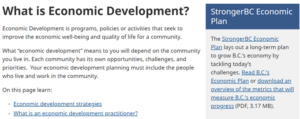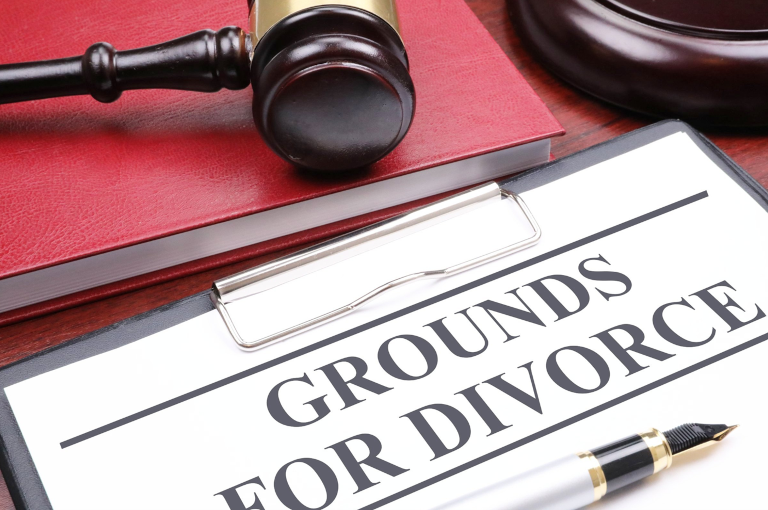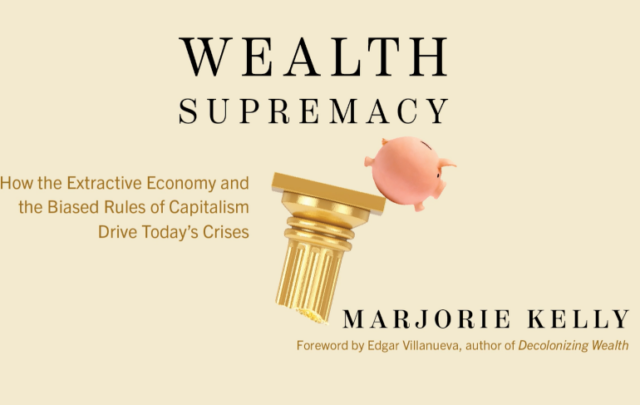The only way to arrive at a safe, sustainable, steady state economy is with substantial behavioral and political reform. Those two categories of reform correspond roughly with the demand side and supply side of the economy, respectively. In the simplest of terms, people must conscientiously demand less—wealthy people in particular—and policymakers must help ensure that the supply of goods and services is not in a state of overshoot.
My focus here is on the supply side. That means all economic production: agriculture, extraction, manufacturing, and services. The level of economic activity is steered to a significant extent by public policy, most obviously in socialist nations but clearly enough in capitalist democracies as well.
I’ll focus on the USA, but the principles will apply to international politics as well. Governments around the world need to intentionally and explicitly get off the growth path and help their nations move toward a steady state economy. For the wealthier countries in an advanced state of overshoot, clearly including the USA, the goal should be degrowth toward a steady state economy.
I will argue that the place to start with policy reform is statutory law; that is, the laws passed by Congress and signed into law by the President. I will further argue—surprisingly to some—that the most strategic starting point is with laws propounding the phrase “economic development.” Amendatory language in the economic development laws will open the door for the big prize: divorcing the government from “economic growth.”
Economic Development in the United States Code
The United States Code (Code) is the authoritative compilation of “general and permanent” laws of the USA. Highly specific and short-term laws (amnesty laws, for example) are not included in the Code. The heart of the Code is statutory law; that is, legislation, the complete collection of which is found in the United States Statutes at Large.
The Code also includes other types of binding federal policy, such as executive orders and presidential proclamations. However, judicial case law (aka “common law”) is not included. Neither are federal agency regulations, which are codified instead in the Code of Federal Regulations (CFR).
I used to tell my Virginia Tech students to think of U.S. law and policy as falling on a spectrum from “Big P” (P for policy) to “little p” in terms of power, scope, and durability. Agency-specific regulations would typically be toward the little-p end of the spectrum, as their scope is quite limited. Executive orders—impressively powerful and sweeping—are toward the Big-P end of the spectrum. Their power tends to diminish or disappear, however, when a new president is elected.
| Title | Subject | Sections | Instances |
| 42 | The Public Health and Welfare | 93 | 166 |
| 7 | Agriculture | 52 | 70 |
| 22 | Foreign Relations and Intercourse | 41 | 48 |
| 15 | Commerce and Trade | 18 | 31 |
| 40 | Public Buildings, Property, and Works | 16 | 28 |
| 16 | Conservation | 20 | 26 |
| 49 | Transportation | 19 | 26 |
| 25 | Indians | 21 | 25 |
| 29 | Labor | 14 | 21 |
| 48 | Territories and Insular Possessions | 13 | 17 |
Top ten titles in the United States Code by instances of “economic development.”
Herein, we are concerned with statutory law, which comprises the bulk of the Code. A statute hammered out in Congress and signed by the President is powerful, sweeping, and durable (short-term laws excepted). Statutory law is the biggest “P” in the policy world. We need it for steady statesmanship.
The phrase “economic development” is used 555 times in codified, statutory law. It’s found in 27 of the 53 titles comprising the Code. The prevalence of the phrase varies substantially across those 27 titles. For example, it appears only once in Title 35 (Patents), and there, only because the Native Latex Commercialization and Economic Development Act of 1978 is cited.
In contrast, “economic development” is a predominant theme in Title 42 (Public Health and Welfare). It appears 166 times there, often as a criterion for federal grants, community planning, or the management of crucial resources such as water. The fact that it is so prominent in the title on health and welfare reflects how important economic development has been deemed by Congresses past.
Growth and Development in the Vernacular
In the vernacular, economic development is hardly discernible from economic growth. When people think of economic development, they think of more roads, facilities, houses, and businesses. That’s also growth, plain and simple. Yet the mere existence of the two phrases indicates that there is, or should be, some distinction between growth and development.
Fortunately, vernacular languages change with the times. Already, in the vernacular of certain segments of society, “development” tends to connote an improvement, a bettering, an increase in the quality of life that is not so clearly or prevalently implied by “growth.” This was a key point of a 2010 book by Daphne Greenwood and Richard Holt, Local Economic Development in the 21st Century. The subtitle gets the point across as succinctly as possible: Quality of Life and Sustainability.
An even more telling phrase is the title of their Chapter 1: “Economic Growth vs. Economic Development.” Referencing the work of Herman Daly, among others, they support the argument that growth and development are not one and the same. They elaborate extensively on the concept and process of economic development throughout the book, but their basic definition is concise: “a broadly based and sustainable increase in the overall standard of living for individuals within a community.” For Greenwood and Holt, the “standard of living” is not equated (as conventional economists often equate it) with GDP growth, either.

British Columbia is smack in the middle of a debate: Is economic development served by economic growth? (Government of British Columbia)
If only all entities would distinguish so agreeably between growth and development, we’d be in steady-state business. Unfortunately, that is far from the case. Conventional economics is still a pro-growth pursuit, and many of our economists in civil service learned their craft in the neoclassical departments of American academe.
Where the academic rubber meets the public policy road, the tendency is once again to combine growth and development into a relatively seamless concept. The mission of the U.S. Economic Development Administration (EDA), for example, is to “lead the federal economic development agenda by promoting innovation and competitiveness, preparing American regions for growth and success in the worldwide economy.” They define economic development as “Creating the conditions for economic growth and improved quality of life by expanding the capacity of individuals, businesses, and communities to maximize the use of their talents and skills to support innovation, job creation, and private investment.”
While the EDA has defined economic development, Congress has not. The EDA clearly took liberties in defining economic development in terms of growth. That gives steady staters a meaningful, feasible opportunity for some highly effective policy reform.
Strategic Relevance of “Economic Development” in Statutory Law
As it stands, the 555 references to economic development in the United States Code are interpreted by grant applicants, local governments, political appointees, bureaucrats, and judges to mean, in essence, economic growth. More roads, facilities, houses, and businesses, with no attention to optimal scale.
Imagine if all such grant applicants, local governments, political appointees et al. were to be informed, and thenceforth regularly reminded, that development and growth are not at all the same thing. To the degree the distinction was emphasized, or even mandated as a criterion for agency operations, the impetus for GDP growth would be greatly defused from the supply side.
Let’s take a crack at a statutory definition of economic development. For the steady-state purposes at hand, the definition must be a combination of delimiting (relatively exhaustive, comprehensive) and narrowing (precluding meanings that might otherwise be or become inferred):
“Economic development” means the pursuit and achievement of material, physical, and environmental conditions that improve, or are conducive to improving, the public health, safety, and welfare. It neither necessitates nor precludes economic growth, a growing population, and/or a growing GDP. Economic growth in some contexts may be conducive to economic development, and may in other contexts be preclusive of economic development. Economic development is always desirable, while economic growth may be undesirable where it causes more harm than good to public health, safety, and welfare.
Now that we have a steady-state (or at least a growth-agnostic) definition of economic development, the next question is where it should be entered into statutory law. There are two basic approaches. The first is to amend a particular statute, thereby setting a precedent that would spread across the culture of an agency and the government at large. The second approach, “going for broke” we might call it, would be an act of Congress to essentially amend the entire Code, such that any and all mentions of “economic development” in codified, statutory law hew to the new definition.
Taking the first approach, we might amend, for example, the Public Works and Economic Development Act of 1965 (PWEDA). Codified in Title 42, Section 3121 of the Code, PWEDA established the Economic Development Administration (EDA). PWEDA alone accounts for a hefty share of the “economic development” instances in the Code.1 Amending PWEDA to include the definition above would commit the EDA to a veritable paradigm shift. The agency would have to modify its mission statement and replace its small-p, growth-oriented definition of economic development with the Big-P definition mandated by Congress.
Still considering the first approach, a strategic variant would be to select a “lesser” title, in terms of its economic development prominence. For example, “economic development” is found only five times in Title 43, Public Lands. Presumably it would be a lighter lift to squeeze our paradigmatic definition into a section of the Code that is largely about conservation to start with. Entering the definition in Title 43 would have less of an effect than in Title 42, but would still set a highly helpful precedent.
The second approach, “going for broke,” would essentially define economic development for the entire federal government in one fell swoop. With this approach, there’d be no need for a precedent to spread across the culture of an agency and the government at large. The new definition would be the law of the land, immediately superseding any small-p references to economic development in the regulations and internal policies of federal agencies.
Then What?
Idealists and dreamers may shrug their shoulders and lament, “Big deal, a definition of economic development. What about all the emphasis on economic growth per se?” And they’d have a point, with 73 “binding references” to economic growth in the United States Code. Yet we have to start somewhere; we have to find traction in the terrain of public policy reform. Defining economic development would clearly be more “tractionable” than superseding economic growth at this point in the history of statutory law.

The United States Code: in need of steady statesmanship. (Wikimedia)
Such an inroad to statutory law would indeed “crack the Code” open, begging questions like, “Under what circumstances is economic growth not conducive to economic development?” Such questions would call for additional definitions of terms required for steady statesmanship. Terms like “natural capital,” “ecosystem services,” “carrying capacity,” “ecological footprint,” “biocapacity,” and perhaps the summum bonum of steady statesmanship: “optimal scale.”
Defining economic development in statutory law would make John Stuart Mill, Herman Daly, and Daphne Greenwood proud. It would be the greatest achievement to date in bringing ecological economics, steady-state economics, and degrowth principles into public policy. Furthermore, it would lower the propensity of the U.S. government to push for GDP growth, truly “by definition.”
I’d call that a major economic development.
1 PWEDA, as amended, includes 186 instances of “economic development” (capitalized in some instances). Apparently not all instances have been codified, unless perhaps some were codified outside of Title 42.






